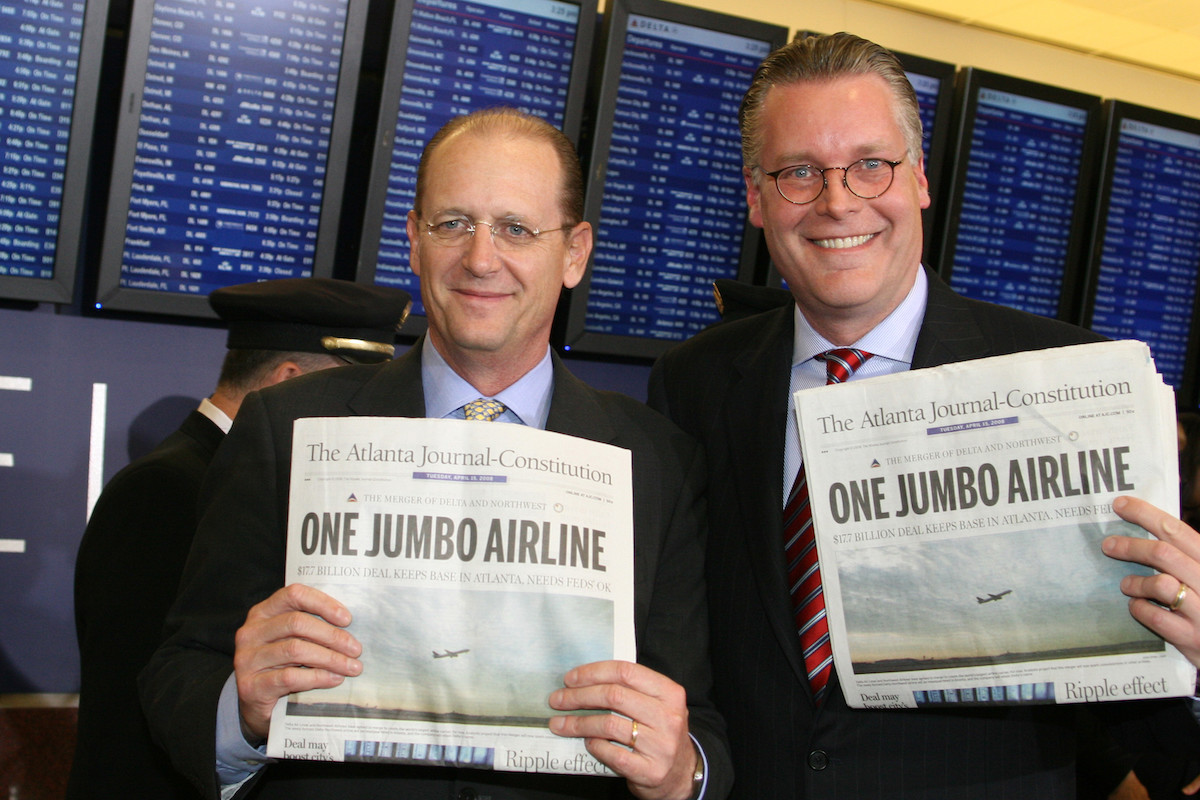Skift Take
Eight mergers have really shaped the U.S. airline industry we have today.
The U.S. airline industry today is dominated by four big airlines: American Airlines, Delta Air Lines, Southwest Airlines, and United Airlines. Together, they fly 78% of all of the seats in the U.S. market.
It was not always this way. At the turn of the 21st century, these same four airlines controlled just over a 50% share of all seats in the U.S. domestic market, according to Bureau of Transportation Statistics (BTS) data via Cirium Diio.
Eight big airline mergers since 2000 have reshaped the U.S. industry. Storied names including Continental Airlines, Northwest Airlines, and US Airways all disappeared into other brands — living on only in memory and the rare heritage livery jet.
Now, two more mergers are proposed. JetBlue Airways wants to buy Spirit Airlines for $3.8 billion in a deal the Justice Department is trying to block. And Alaska Airlines has agreed to buy Hawaiian Airlines for $1.9 billion.
Here's a timeline of the mergers that have reshaped the U.S. airline industry since 2000.
2001: American and TWAJust 10 days into the new year, American announced plans to buy long-struggling Trans World Airlines for $500 million in cash plus the St. Louis-based carrier's aircraft operating leases. At the time, the deal would jump American up two notches to be the second-largest U.S. airline behind only Delta based on total seats, BTS data show. The deal closed in April 2001.
But American's grand plans to use TWA to make itself a larger, more formidable competitor fell to the wayside after the September 11 attacks. In the days and weeks immediately following the terrorist attack, the airline needed to make deep cuts to survive. American parked all of TWA's McDonnell Douglas DC-9 jets that October, and quietly folded TWA into itself that December. In 2009, American closed TWA's former St. Louis hub, which it had once envisioned as a third key Midwest
